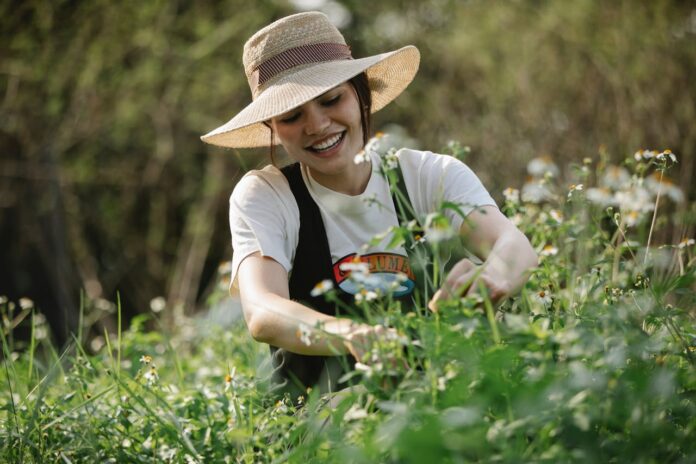Small farms are transforming faster than many people realize, blending hands-on experience with tools once reserved for large operations. They experiment with new technology, build direct relationships through digital platforms, and approach their work with the same creativity and adaptability you’d expect from a startup.
This shift isn’t about chasing trends, it’s about finding smarter, more sustainable ways to grow, sell, and connect. And really, who better to drive innovation than the farmers who adjust to changing seasons every single day?
Why Small Farms Are Becoming Testing Grounds for New Agricultural Innovation
Small farms and micro-farms are quietly reshaping how new agricultural technology enters the real world. Their biggest advantage isn’t size, it’s speed. When a large operation wants to test a new system, it often needs multiple approvals, financial reviews, and long planning cycles. A small farm can simply decide, try it next week, and see what happens. That agility makes them the perfect test environment for early-stage tools that need quick, honest feedback.
Tech developers also turn to small farms because they get direct access to people who actually touch the soil every day. Instead of working through layers of management, they hear from the farmer who knows exactly how the field behaves after a heavy rain or how the greenhouse reacts to sudden heat. That level of insight helps new tools become more practical, more intuitive, and more adapted to real farming conditions.
Another overlooked advantage is the controlled scale. A micro-farm can run trials without risking hundreds of acres of crops, making experimentation much safer. If a sensor fails or a system misreads conditions, the impact is manageable, and the lessons are immediate. Over time, many of the innovations refined on small farms in agriculture, like automation tools or crop-monitoring systems, eventually scale up to larger operations. In a way, micro-farms act like field laboratories for the entire agricultural sector.
How Small Farms Use E-Commerce to Build Loyal, Local Audiences
Technology isn’t only transforming how small farms grow food, it’s changing how they connect with people. A decade ago, a small farm relied almost entirely on local markets or word of mouth. Today, many rely on simple online storefronts and social profiles to stay visible, sell products, and communicate with customers throughout the year. Why limit yourself to one weekly farmers’ market when you can share updates daily?
Direct-to-consumer sales have become a major strength. When customers order produce boxes, seasonal goods, or fresh items online, they’re not just buying food, they’re buying the relationship behind it. People love seeing where their food comes from, how it’s grown, and who grows it. That transparency builds trust in a way traditional supply chains rarely allow.
Some small farms in agriculture also use digital tools to streamline subscriptions or pre-orders. Instead of guessing how much produce to harvest, they plan based on actual online demand. This reduces waste, stabilizes income, and helps customers get consistent, high-quality products. It’s simple, but incredibly effective: when customers feel included in the farming process, they come back.
Beyond sales, small farms use online communication to educate people about crops, share behind-the-scenes challenges, or celebrate seasonal milestones. That kind of storytelling creates genuine loyalty. Even something as simple as showing how the fields respond to a change in weather can spark interest and build community. In many cases, the farm becomes more than a place, it becomes a familiar presence in people’s everyday online lives.
How CBD Farming Fits Into the Small-Farm Innovation Story
CBD farming has become one of the most interesting examples of how small farms embrace technology and niche markets at the same time. Because hemp is a relatively new legal crop in many regions, small farmers had the freedom to experiment from day one.
There wasn’t a decades-old rulebook telling them how to plant, harvest, or process it. They had to figure things out quickly, which naturally pushed them toward tech-driven solutions. Many growers used this flexibility to test niche cultivars such as the Frosted Kush strain, which quickly became a favorite among small farms looking for high-quality genetics suited for controlled, tech-supported environments.
CBD crops require precise growing conditions, and that’s where technology makes a real difference. Farmers often rely on soil sensors, real-time environmental monitoring, and controlled irrigation to maintain consistent quality. When even small changes in moisture or nutrients can affect cannabinoid content, why leave anything to chance? For many farmers, the answer is simple: measure everything, adjust fast, and keep the plants as healthy as possible.
Because CBD farms operate under strict quality standards, traceability becomes a major part of the business. Digital tracking tools help farmers document every step, from seed selection to harvest, and share that information with processors or direct consumers. This kind of transparency builds trust and helps smaller growers compete with larger operations that focus on volume over craftsmanship.
According to Stefanie Reiser, the founder of “Acknowledge”, the best plants come from farmers who care not just about the harvest, but about the land, the people, and the purpose behind the work. When growers lead with intention, transparency, courage, and respect for their ecosystem, the quality of the crop naturally follows.
Marketing also plays a huge role. CBD farms were among the first agricultural businesses to treat social media, e-commerce, and digital branding as essential tools rather than optional extras. They communicate their growing practices, lab results, and product benefits with a level of clarity that makes people feel confident in what they’re buying. In many ways, they operate more like specialty producers or boutique brands than traditional farms.
CBD farming also highlights how small farmers diversify to stay resilient. Many didn’t replace their traditional crops, they added hemp to create a new revenue stream. Some rotate CBD with vegetables, herbs, or microgreens. Others pair it with value-added products like infused oils or wellness items. This mix of farming and entrepreneurship fits perfectly with the startup-minded approach small farms are taking today.
Small Farming as a Start-Up: What Agriculture Can Learn From Tech Culture
If you look at how many small farms operate today, the parallels with start-ups are hard to ignore. They test new ideas constantly, adjust quickly when something doesn’t work, and treat every season as a learning cycle. Instead of following the same routine year after year, they experiment with new crops, new layouts, new growing methods, or new technologies. It’s the same mindset you’d see in a small tech company pushing out updates and improvements.
Data plays a much bigger role than it used to. Farmers track soil moisture, plant health, temperature swings, and yield patterns with a level of detail that wasn’t possible a few years ago. Why guess when you can measure? This data-centered approach helps small farms make smarter decisions, reduce resource use, and identify problems before they escalate.
Automation is also changing the rhythm of daily work. Tools that adjust irrigation automatically, monitor weather conditions, or track livestock behavior help farmers get more done with fewer hours. For small operations that don’t have the budget for extra labor, these tools aren’t luxuries, they’re lifelines. They free up time for planning, customer relationships, and the creative side of farming.
Branding might seem out of place, but small farms in agriculture are proving otherwise. A strong brand, clear messaging, consistent visuals, and an authentic story, helps farms stand out in a crowded market. When people recognize the values behind a farm, they don’t just buy products, they support a mission. Isn’t that the same thing successful startups aim for?
Small farms also collaborate much like startup ecosystems. They share resources, exchange knowledge, and sometimes even coordinate distribution. Instead of competing, they build networks that help everyone thrive. This community-based approach allows them to take on challenges that would be overwhelming alone.
Finally, resilience is a defining trait. Weather shifts, market changes, and supply shortages might derail a rigid operation, but small farms in agriculture are built to pivot. They switch to different crops, explore new revenue streams like workshops or seasonal events, or shift their growing schedule based on demand. Flexibility becomes a competitive advantage, and a survival skill.
Conclusion
Small farms now play an outsized role in shaping the future of agriculture by testing new tools, adopting modern business strategies, and building loyal communities through transparency and innovation. Their willingness to experiment gives them an edge that large operations often can’t match, allowing them to stay flexible in the face of market shifts, climate pressures, and changing consumer expectations.
As technology continues to evolve, these small growers prove that progress doesn’t require massive acreage, just curiosity, resilience, and the courage to try something new. After all, isn’t meaningful change often sparked by the people closest to the work?
Find a Home-Based Business to Start-Up >>> Hundreds of Business Listings.
















































